Even if you’re one of the most promising young racing drivers of your era, you still have to take your driving test. Shortly after she turned 17, Jamie Chadwick thought she’d better get on with it. She had been driving competitively since she first raced a go-kart, when she was 11. “Obviously I knew how to drive a car,” she says. “But driving on roads, knowing everything about road driving, is very different.” She’d planned to have lessons, but only managed “sort of one and a half” before a cancellation meant she had a chance to take the test. “I was, like, I’ll just do it and if I fail, I might never live it down, but I just have to give it a go.” To her great relief, she passed. “Somehow. But I was never taught to park, so I still can’t. Then I found myself as designated driver and I was, like, this isn’t worth it either.” She laughs. “So a lot of regret in that whole situation.”
Chadwick might not be able to park, but in Formula 1, she’s not going to need to. If all goes to plan, that is exactly where she’ll end up, breaking a 43-year dry spell for women on the starting grid. Last year, she won the inaugural W Series, an all-female championship that ended at Brands Hatch in August. She is gathering firsts at quite a rate: at 17, she was the first woman and youngest driver to win the British GT Championship. In 2018, she became the first woman to win a British F3 race. Last February, she became the first female winner of the MRF Challenge series in Chennai. She is competing now in the Asian F3 Championship.
We meet at the Williams racing team’s HQ, in the Oxfordshire countryside. Impressed by her considerable achievements so far, Williams took her on as a development driver at the beginning of 2019. It is a legitimate pathway to Formula 1 and they will train her for the job – she immerses herself with the team, goes to race weekends and learns from existing drivers and engineers, in preparation for the new, unfamiliar racing environment.
She looks like a typical 21-year-old, in ripped jeans, a white sweatshirt and crisp Stan Smiths, clutching her phone. Though she makes light of them, she is serious about her ambitions and very aware she is trying to make history. History is, in fact, all around us. We’re sitting in Williams’ onsite museum, surrounded by racing cars from across the eras. As we drink tea, Nigel Mansell’s eyebrows are poking up from behind an old FW14B racing car, watching over us.
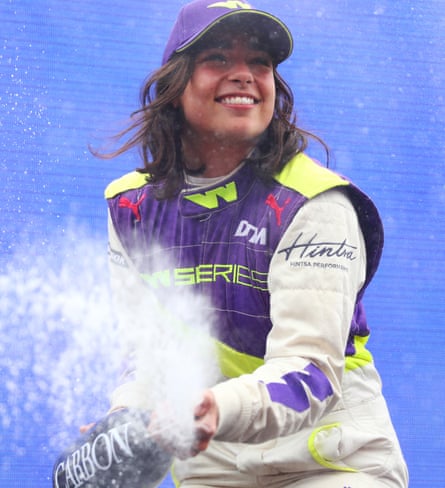
This has been a huge year for Chadwick – and the attention has taken her by surprise. “Now it’s a weird sort of comedown.” She walked away with $500,000 prize money after winning the W Series (almost all of it will be ploughed back into her career). The series attracted far more notice than any of its participants expected. “It’s kind of unheard of in motorsport at that level,” she says.
Partly, she puts that interest down to a growing appetite for women competing in sport in general. In football, the success of the Women’s World Cup has seen attendance records smashed for the Women’s Super League this year, and the W Series was shown on Channel 4. “Everyone’s getting behind it,” she says, of female sport. But Chadwick wants to succeed as a driver, not a female driver, and is aware that people were sceptical when the series was first announced. Why segregate by gender, when the goal is to see women and men racing on an equal footing?
“I think if you put it like that, it doesn’t appeal to any of the drivers who ended up doing it,” she says. “My initial thought process was, ‘If I’m raising X amount of sponsorship to do this, why would I put it into something that might not be so competitive?’” Then she met the people who founded it, talked to those close to her and realised that the W Series was significantly funded, gave young female drivers the chance to drive cars they might not otherwise have had access to and, crucially, allowed participants to amass super licence points, which are necessary to progress to Formula 1.
“The finance of motorsport is the biggest barrier for pretty much all young drivers, and specifically the many girls coming through,” she says. The W Series tries to level the playing field. “It allows talent to prevail and puts female drivers in and around the junior ranks to be given a greater opportunity.”
The amount of money involved in motorsports is staggering, even at junior levels. “If I explain it to you, you would just think we’re all mad, in terms of, why would anyone spend that kind of money to go racing?” she says.
Financial backing is crucial for success, so any attention the drivers receive is likely to be beneficial in terms of attracting sponsors and investors. Chadwick is becoming a name known outside of what she likes to call the “little bubble” or “little world” of motorsports. “But I’m blissfully oblivious to a lot of that stuff, which is probably a good thing,” she says. “If anything, it makes me more motivated. I now feel like I’ve been given an opportunity greater than I’ve ever had in my career, and I want to use that, take it with both hands. If I can blank everything else out, then that’s going to be a good thing.”
Chadwick was born in Bath and spent some of her childhood in the Isle of Man, where the TT motorcycle races “might have subconsciously ignited something. My perception of speed must have changed after seeing that.” Her parents work in finance and property, and are not in the motor racing world. “So they see it for what it is, nothing more, nothing less.” Her older brother, Oliver, started go-karting and Chadwick, always competitive, tagged along. “I was 11 or 12, so relatively late,” she explains. Usually professional drivers have been karting since six or seven, in vehicles that go up to 60mph. Chadwick drove go-karts for fun, and had no notion it might be a career. But her natural ambition intervened. “I think I drove my brother’s kart, which was slightly higher performance,” she smiles. “If I was running in athletics, I wouldn’t suddenly find four or five seconds each lap, but in a go-kart, I could. I fell in love.”
Her brother stopped racing when it became apparent it wouldn’t be a career for him and he now runs his own business. But when he did drive competitively there was a year when brother and sister raced in the same series. “We didn’t get on,” she laughs. “My poor parents. They had to drive us everywhere, and it was always a two or three-hour drive. If it was a good weekend, great, but if it was a bad weekend, just… hell.”
Presumably, a good weekend for one of them might have meant a bad one for the other? “Exactly! Yeah. We clashed a lot.”

Chadwick is often asked how her parents feel about the dangers of her sport. We meet a few days after Anthoine Hubert was killed in a horrifying Formula 2 crash during the Belgian Grand Prix. Lewis Hamilton paid tribute to Hubert with a reminder of the dangers of what they do. “If a single one of you watching thinks for a second what we do is safe, you’re hugely mistaken,” he said.
“My compassion obviously goes straight to the driver,” says Chadwick, carefully. “Our world is extremely competitive, but when you see something like this, you really do see our community coming together.” She insists the sport is getting safer, that accidents are rare and unlikely. “But you know the risks, you know these things can happen, and you know that every race you have, that’s just the way it is. It’s unlikely, but these things do happen.”
Chadwick has always been sporty and always loved a thrill. She went to Cheltenham College, an independent boarding school, though she would go home at weekends. She turned down trials for the England under-18 hockey squad to compete at the Ginetta Junior scholarship weekend – a fund for budding racing drivers offered by the British racing and sports car builder. (She won the scholarship.) She’s a keen skiier – as children, she and her brother would race each other at top speed on the slopes. “If it all stopped today, I don’t know how I’d get that fix of adrenaline.”
But it doesn’t look as if it’s going to stop any time soon. Chadwick has an intensive fitness training regime, most of which centres around building her core strength and upper body. “The G-forces your body goes through when you’re in a Formula 1 car, or any single-seater, is huge, and that puts a lot of strain on your neck. Going up the ranks, you don’t have power steering. You have to be mentally fit so you don’t get to that point of fatigue.” The physical training for driving is more complex than many realise. “A lot of people say, women can definitely race in Formula 1 because it’s not a physical sport. Well, it is a physical sport, but I think it’s a level that women can get to.”
Motor racing remains male-dominated, particularly when it comes to the higher echelons. In 1958, Maria Teresa de Filippis became the first woman to compete in a Formula 1 race. She told the Observer in 2006 that she stopped racing “because too many friends had died”. In the 1970s, Lella Lombardi raced for a number of teams. But since Lombardi, there have been no women on an F1 starting grid. Chadwick says that physical strength is only a small part of that. “Ultimately, I’m at an advantage, because you need to be quite light,” she counters. She is short and compact – she shows me that her neck is getting thicker from the training. She mentions Susie Wolff, who also worked as a development driver for Williams, but retired in 2015. “When she stopped racing, the circumference of her neck shrank by a crazy amount. She said loads of her clothes didn’t fit her any more.”
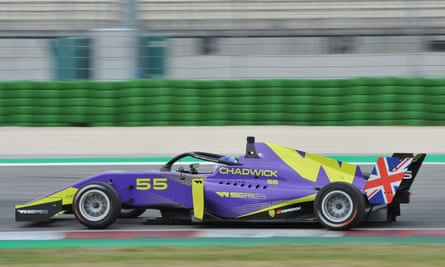
The goal for Chadwick is Formula 1. “It always has been, but now it’s a little more realistic than it was a year or two ago.” When she was 14 or 15, she remembers realising that driving wasn’t just a hobby, or something she did for fun. “And then when you think, I want to be a racing driver, you think, I want to race in Formula 1. But you say that, and you never actually think it’s going to happen. It’s still a mad thought, to think that one day it could be possible.”
The old racing cars in the museum are ghost-like around us. “Even now, immersing myself with Williams, I still have pinch-me moments,” she says. “But, yeah, it’s the ultimate goal. I’m under no illusions as to how tough it’ll be to get there.” She insists that, despite the attention 2019 brought, it is crucial for her to get there because she is the best at what she does. “I want to do it on merit. I don’t want to do it because I’m a token female racing driver. I really feel that given the right opportunity and the right support, it is possible, not just for me, but for women, to race competitively in Formula 1. Ultimately, I want to be the one to prove that.”
In 2016, Bernie Ecclestone caused a stink when he said women “wouldn’t be taken seriously” as F1 drivers. “I don’t know whether a woman would physically be able to drive an F1 car quickly,” he said. Chadwick is breezy when it comes to the topic. “When I hear quotes like that, I don’t feel like he’s telling me. It really doesn’t seem to affect me.”
Chadwick is so cool and composed you can’t help but believe her. “There are people who think, OK, you’re good for a girl, but you might not necessarily make it to the top. I see it as motivation. I genuinely believe that it is possible and, if not me, there is a female out there who is definitely capable.”
Right now, Chadwick’s life is all racing. The W Series victory has left her with options on the table for 2020. She wants to get her F1 super licence points and to be racing as much as possible. “Ultimately, I want to find myself in a position where I can drive a Formula 1 car in two or three years.” That leaves little space for a world outside of racing, though she seems perfectly happy for that to be the case at this stage.
“I wouldn’t change it for the world, but it is quite hard to manage a social life and personal life, too.” Her job means she works weekends. “Suddenly, on a Tuesday night, I’m like, who wants to hang out with me? Who wants to go out? My schedule fits in with no one else’s.”
As a child, Chadwick didn’t follow motorsports. She didn’t have posters on her wall. “Now, on a daily basis, I meet people I’m inspired by, but not so much when I was growing up. I just kind of did my own thing, I guess.” Now, if all goes to plan, Jamie Chadwick might be that poster for someone else. “It’s an added bonus,” she smiles, though she’s having none of it. “But what I’m doing at the moment is just for me. I want to achieve what I want to achieve for me, and that’s it.”


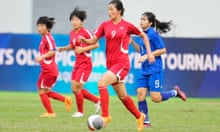



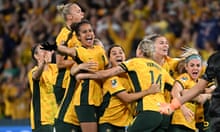



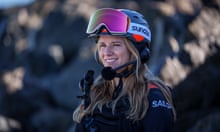
Comments (…)
Sign in or create your Guardian account to join the discussion